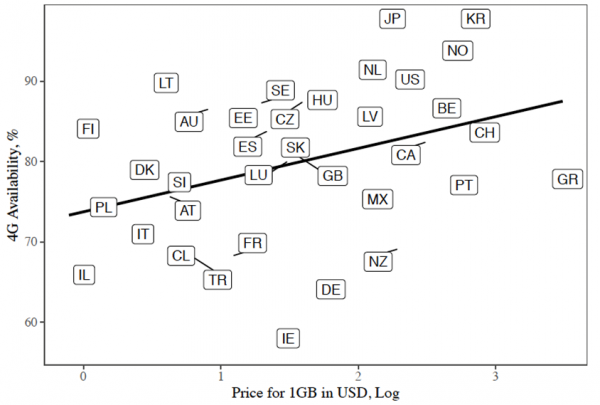
When I
travel to other countries, my first task when I leave the airport is to buy a
mobile data plan for my phone. Almost every time, I am reminded just how much
less I have to pay abroad than in the US. Then, I turn on my phone to find
directions to my hotel, search local blogs to find a good place for lunch, or
ask Google how to make an international call. As I wait and wait and wait for
the pages to load, I remember why it is that I pay so much for mobile data at
home.
The cost of mobile data — and other expenses like broadband internet and airplane tickets — are at the heart of a growing debate about the impact of industry concentration and competition in US markets on the prices that consumers pay. A November op-ed by David Leonhardt in The New York Times declared that “Big Business is Overcharging You $5,000 a Year.” Speaking at a December event at the Aspen Institute, NYU Stern economist Thomas Philippon pointed to telecom as the best evidence that competition policy in the U.S. has lost its way, “I think one number should be in your mind … If you lived in London, Paris, or Berlin, your cell phone bill would be half and your internet bill at home would be half as well.”
But, do Americans get what they pay for? If Americans get faster, more reliable wireless service in exchange for higher prices, it is harder to argue that the problem is a lack of competition. If Americans pay more to get less, in contrast, then we should be more concerned about anticompetitive forces in the marketplace. To answer the question, I compare the relationship between mobile data prices and quality in 36 OECD countries. For price, I use the average cost of 1GB of wireless data, reported by cable.co.uk. For quality, I use the proportion of time users have access to 4G networks, reported by Opensignal. In the graph below, the black line indicates expected 4G availability, conditional on price. On average, a 100 percent increase in the price of 1GB of data is associated with a 3.9 percent increase in 4G availability. Note that the US falls above the line, meaning that American consumers get more access to 4G than would be expected given the price they pay. France and Germany fall below the line. Great Britain falls just above it.

What explains this pattern? At the same Aspen Event, MIT economist Nancy Rose, who led the Economic Analysis Group at the Department of Justice from 2014 to 2016, highlighted how differences between US and EU telecom regulations discourage infrastructure investment in the E.U. “One of the big reasons for the contrast … is because a number of European countries have established regulations that require companies that own the wires to sell access to their wires at very low prices to ‘virtual competitors,’” said Dr. Rose. “If you set that price very low … you’re going to have low prices for consumers but you might discourage investment in the facilities that provide that access.”
The case of wireless data highlights just how hard it is to analyze competition in a market solely by looking at prices. Quality, obviously, matters too. In many industries, including telecom, government regulation and public subsidies also distort market prices. In the case of wireless broadband, the United States’ focus on competition among providers for the best wireless coverage has led to faster, more reliable coverage. And, yes, higher prices. But, relative to Great Britain, France, and Germany, the data say that American consumers are getting a bargain.
The post America’s mobile broadband consumers are getting a bargain appeared first on American Enterprise Institute – AEI.
